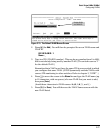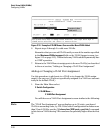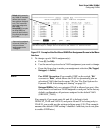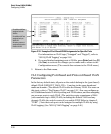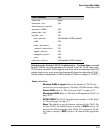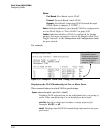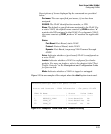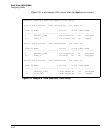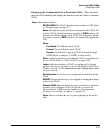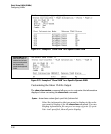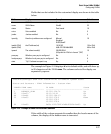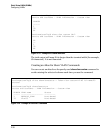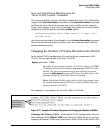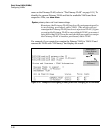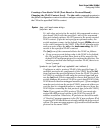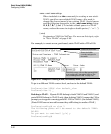
Static Virtual LANs (VLANs)
Configuring VLANs
Displaying the Configuration for a Particular VLAN . This command
uses the VID to identify and display the data for a specific static or dynamic
VLAN.
Syntax: show vlans < vlan-id >
802.1Q VLAN ID: The VLAN identification number, or VID. Refer
to “Terminology” on page 2-7.
Name: The default or specified name assigned to the VLAN. For
a static VLAN, the default name consists of VLAN-x where “x”
matches the VID assigned to that VLAN. For a dynamic VLAN,
the name consists of GVRP_x where “x” matches the applicable
VID.
Status:
Port-Based: Port-Based, static VLAN
Protocol: Protocol-Based, static VLAN
Dynamic: Port-Based, temporary VLAN learned through
GVRP (Refer to chapter 3,“GVRP” in this guide.)
Voice: Indicates whether a (port-based) VLAN is configured as
a voice VLAN. Refer to “Voice VLANs” on page 2-60.
Jumbo: Indicates whether a VLAN is configured for Jumbo
packets. For more on jumbos, refer to the chapter titled “Port
Traffic Controls” in the Management and Configuration Guide
for your switch.
Port Information: Lists the ports configured as members of the
VLAN.
DEFAULT: Shows whether a port is a tagged or untagged member
of the listed VLAN.
Unknown VLAN: Shows whether the port can become a dynamic
member of an unknown VLAN for which it receives an
advertisement. GVRP must be enabled to allow dynamic
joining to occur. Refer to table 3-1 on page 3-8.
Status: Shows whether the port is participating in an active
link.
2-35



